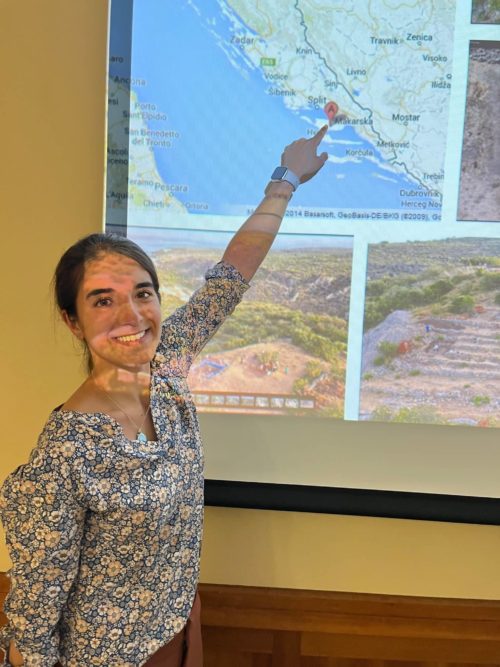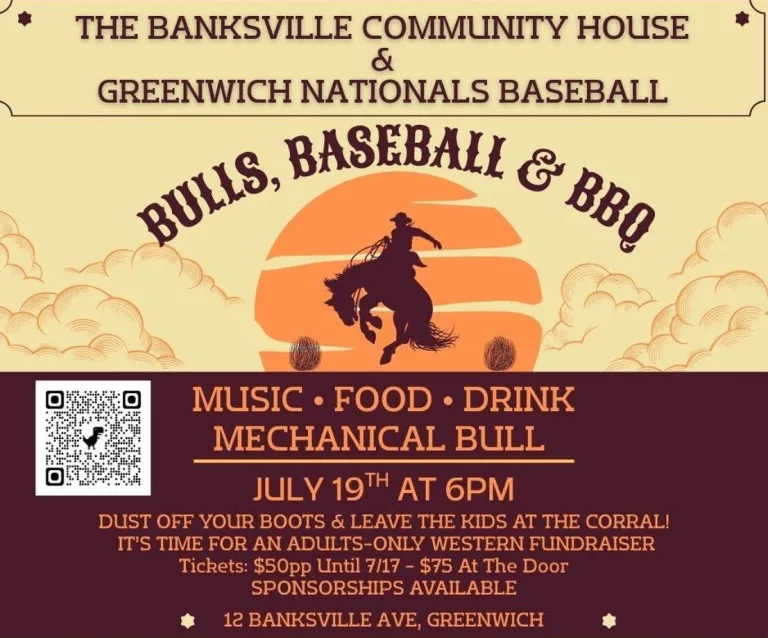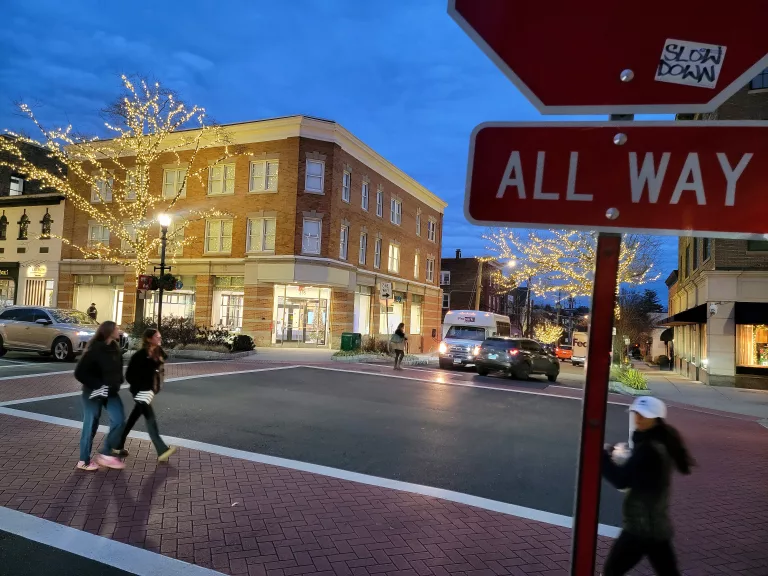By Anne W. Semmes

Earlier this month the Byram Shubert Library became once again a forum for introducing the wonders of archaeology made possible with the gift of the late, pioneering Nancy Bernard, founder of the long running (AAG). The AAG is no more but Bernard has left behind an extraordinary collection of stone age tools that once belonged to the British Museum but now donated to the Library by UCLA. They are made available for show and tell in archaeology programs offered by Miguel Garcia-Colon, Branch Manager of the Library, as part of Bernard’s bequest for ongoing programs.
In February, children as young as four-year-olds were able to see and touch those early human tools in a program for “Archaeologists-in-the making” at the Library. Opening their eyes was a Greenwich grown archaeologist with her PhD in-the-making, Ana Buran. Buran was back in May to introduce adults to the “Fundamentals of Archaeology.”
“I know her since she’s a little girl,” introduced Garcia-Colon. “I know Papa. I know Mama. They’re a Library family.” And what luck when he discovered Ana Buran was pursuing archaeology. Buran then learned about those amazing stone age tools, “She sat down for five hours going through each one and labeling them,” he told, “So, she’s a very serious student about archaeology.”
And in the audience were her parents Ela and Ivan Buran that she introduced as being from Croatia, where she is headed this summer for research. Thus, she told “It’s really interesting to me to be able to study the origins of where our human ancestors come from, and that also is my dissertation topic and area of interest at Boston University.” And a special focus in her study are lithics, “stone age tools,” she said, “and that is what we have with us today,” newly labeled and presented on a table before her audience.
Buran calls herself a digital archaeologist. “So, a lot of time I spend on computers making models to pinpoint the exact location of artifacts,” she told. And as part of her first project in Croatia, she’s headed for an island called Brac off the coast of Croatia. “It’s bronze age and iron age site…And we’re going to look at the influence of Greek and Roman cultures in this area. We have several agricultural terraces, and they’ve already opened up one of these, a big fire pit.”
So, what drew Buran to this island was it being part of a migration corridor… “for people went from the near East, through the Balkans and then into the rest of Europe. So, this area is kind of like a stopping point for a lot of early humans that we don’t really think about. At least when I think of European archeology, I think of the cool caves that were uncovered in Spain and, and France and Germany and the Balkans get overlooked. And so, it’ll be interesting to explore this hopefully as I work through my dissertation.”
Buran then shifted her talk to the fundamentals of archaeology. “We have excavation, photography, dating methods, context,” she began. “A survey is what we do before we get to put feet down in that site. We need to survey the land, and make sure we know where we’re going to excavate, because once you start excavating, you are removing that soil. You can’t just put it back. So, the soil that we remove, we put it through a sieve or a flotation tank, to get out all the really small lithics that you can’t see with your eye. Then after that, we take them to the lab and…that’s where we pick out the microfauna. So, like rodent teeth and fish bones, and seeds that we might have missed. So, we try to go through all the soil. Once that is done, then we will dump it.”
“We have a lot of documentation that goes on,” she continued. “After excavating, we usually find artifacts…glassware…stone tools, lithics that you see on the table here. And they are basically just rocks that were modified to be used for hunting and gathering…Human bones are rare. They’re usually fragmented as well as animal bones. A lot of carnivores can come into these sites and move the bones, so we don’t usually find huge assemblages.”
So, Buran was asked, what happens to those discovered artifacts after a season of excavations? “Usually, they have to stay in the country that they were excavated in,” she told, “unless you have a specific agreement with the government or the museum agency that you’re working with.” Artifacts excavated in North America, for example, “belong to a Native American tribe or if they have some kind of connections, they go back to the tribe. You’re not supposed to keep what you find.”
So, she summed up with, “What is archaeology? It’s a study of people, cultures, artifacts from ancient times…It could be jewelry, it could be somebody’s old trash kit, tools that aren’t broken that have been resharpened many, many times…I like to think of an archeologist as a detective who digs – you don’t know really what you’re going to uncover. You could have hypotheses and guesses as to what this site could have been used for, but you don’t know the actual artifacts that are going to come out of the ground.”
As archeologists have many different subspecialties, she told. “We all form a large team. Two people maybe can do the same thing. But usually, each person on the team has their own specialty. And that can be somebody who studies human remains, animal remains, plant remains, stone tools, geo geologists who study the soils. But we all share these same goals, and these same important questions: who lived here when; how did they use this site; what did people make; what did they eat? What were the tools that they used? And what kind of contexts did they have with other people? And these questions are important because they form the basis of larger, more specific questions that we wish to address.”
To learn what Ana Buran discovered in her archaeological dig this summer, stay tuned to when she will return to the Byram Shubert Library this fall. For information visit www.greenwichlibrary.org/byram-shubert/






